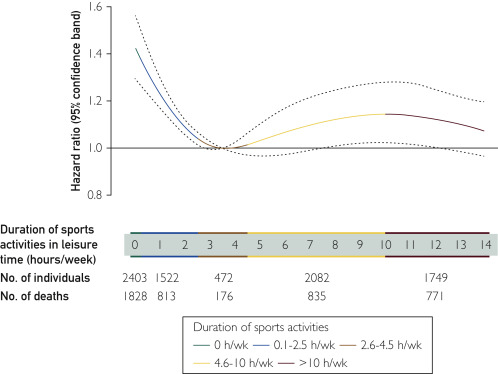
A lot of athletes train with compound exercises that involve multiple muscle groups. For example, a benchpress uses the chest and shoulders as well as the triceps and arms. This gives the athlete more bang for their buck. This allows for more variety in the workouts, keeping the session exciting. This exercise can be included in training for athletes who are looking to improve their flexibility.
For athletes, strong muscles are crucial. They enhance flexibility, agility, as well as endurance. Weight lifting is a popular way to build muscle, but other exercises can improve your body's strength. Athletes should try to reduce stress, get enough sleep, avoid refined carbohydrates, fast food, alcohol, and limit their intake of alcohol. The athlete should also include stretching and aerobics in their workouts. Visit our page about training as an athlete for more information.

Power cleans are also an option for athletes. These exercises can be done with a barbell. However, they can improve flexibility and endurance. Landmines can be performed with a variety of different exercises, including the two-handed landmine shoulder press, front squat, one-arm bent-over row, and landmine presses. They can also work in conjunction with the regular, squat. You can also add a landmine to your back squat.
You can incorporate strength training into your workouts for athletes. These exercises may include weight lifting and can help increase strength and endurance. Some athletes do other exercises as well. Training like an athlete requires intense activity. Therefore, they should avoid stress and alcohol to ensure proper muscle recovery. Athletes need to get enough sleep and avoid processed food, as they can lead to fatigue. When you're training like an athlete, you should try to reduce your stress levels.
While it may seem simpler to play your favorite sports with less training, it can prove very difficult. Often, athletes have to sacrifice sleep and food intake in order to achieve their goals. They must consume foods rich in protein, complex carbohydrates, water, and avoid processed foods and refined carbohydrates. This type of training requires extreme discipline and can often be intense. Athletes need to be mindful of their stress levels. They should make sure they get sufficient rest.

It is important that athletes have specific exercises for each of their muscle groups. You should have exercises that target your elbows and triceps. Dot drills improve agility and balance. Unlike other exercises, they are designed to work all the major muscle groups. Athletes can concentrate on their upper body to strengthen their legs. Cutting is an important part to consider when training for your sport.
FAQ
Why is it important to live a healthy life?
Healthy lifestyles lead to happier and longer lives. A healthy diet, regular exercise, good sleep habits, and stress management will help prevent diseases like heart disease, diabetes, cancer, and stroke.
A healthy lifestyle can also help improve mental health and make it easier to deal with daily stressors. Having a healthy lifestyle will also boost our self confidence and help us look and feel younger.
These are 5 ways you can live a healthy and happy life.
Healthy lifestyles include eating right, exercise regularly, getting enough rest, managing stress, having fun, and eating healthy. You should avoid processed foods, sugar, or unhealthy fats. Exercise burns calories and strengthens the muscles. You can improve your memory and concentration by getting enough sleep. Stress management is a way to reduce anxiety levels and depression. Fun keeps us vibrant and young.
Is cold a sign of a weak immune response?
Cold weather can cause a decline in your immune system. Your body produces fewer white blood cell which fight infection. But, cold makes you feel better. Your brain releases endorphins that reduce pain.
What is the best way to eat?
Your lifestyle and individual needs will determine the best diet for your body. You should also consider how much energy your exercise consumes, whether you like low-calorie or high-calorie foods, and what you enjoy in terms of eating fruits and veggies.
Intermittent fasting may be a good choice if you want to lose weight. Intermittent fasting is a way to eat only certain meals during the day instead of three large meals. You may find that this method works better for you than traditional diets that include daily calorie counts.
Intermittent fasting is believed to increase insulin sensitivity. It may also reduce inflammation. This may lead to a decrease in diabetes risk and blood sugar levels. Intermittent fasting has been shown to promote fat loss as well as improve overall body composition.
How can you tell what is good?
Your body is your best friend. Your body is the best judge of how much exercise, food and rest you should get. It's important to pay attention to your body so you don't overdo things. Be aware of your body and do what you can to maintain good health.
How often should you exercise?
Exercise is essential for maintaining a healthy lifestyle. However, there isn't a set amount of time you must spend working out. Finding something that you love and sticking with it is the key.
If you are working out three times a weeks, aim to do 20-30 minute of moderate intensity. Moderate intensity means that you will still be working hard even after your workout is over. This type of exercise burns approximately 300 calories.
Walking is a great option if you are a keen walker. You can do 10-minute walks four days per week. Walking is easy on the joints and has low impact.
You can also run for 15 minutes, three times per week. Running is a great exercise to build muscle tone and burn excess calories.
If you're not used to exercising, start slowly. Begin by only doing 5 minutes of cardio five times per week. Gradually increase duration until you achieve your goal.
What is the difference among a virus or a bacterium and what are their differences?
A virus, a microscopic organism, is incapable of reproducing outside its host cell. A bacterium, a single-celled organism, reproduces by splitting into two. Viruses can be as small as 20 nanometers, while bacteria can grow up to 1 micron.
Viruses are usually spread through contact with infected bodily fluids, including saliva, urine, semen, vaginal secretions, pus, and feces. Bacteria are usually spread through direct contact with contaminated objects or surfaces.
Viral infections can be transmitted through skin cuts, scrapes and bites. They may also get into the body through the nose and mouth, eyes, ears or rectum.
Bacteria can enter our bodies through wounds, cuts, scrapes, burns, insect stings, or other breaks in our skin. They may also be introduced into our bodies through food and water as well as soil, dirt, dust, and animals.
Viruses and bacteria both cause illness. Viruses can not multiply within the host. So they only cause illnesses when they infect living cells.
Bacteria can spread within the host and cause illness. They can spread to other parts of our bodies. That's why we need antibiotics to kill them.
Statistics
- This article received 11 testimonials and 86% of readers who voted found it helpful, earning it our reader-approved status. (wikihow.com)
- According to the 2020 Dietary Guidelines for Americans, a balanced diet high in fruits and vegetables, lean protein, low-fat dairy and whole grains is needed for optimal energy. (mayoclinichealthsystem.org)
- According to the Physical Activity Guidelines for Americans, we should strive for at least 150 minutes of moderate intensity activity each week (54Trusted Source Smoking, harmful use of drugs, and alcohol abuse can all seriously negatively affect your health. (healthline.com)
- WHO recommends reducing saturated fats to less than 10% of total energy intake; reducing trans-fats to less than 1% of total energy intake; and replacing both saturated fats and trans-fats to unsaturated fats. (who.int)
External Links
How To
27 Steps to a healthy life when your family eats only junk food
The best way to eat healthily is to cook at your home. However, this is often difficult because people do not know how to prepare healthy meals. This article will provide some helpful tips for making healthier dining out choices.
-
Choose restaurants that offer healthy options.
-
Before you order any meat dishes, make sure to order salads or vegetables.
-
Ask for sauces that aren't sweetened.
-
Avoid fried foods.
-
Ask for grilled meats, not fried.
-
If you don't really need dessert, do not order it.
-
After dinner, make sure you have something to eat.
-
Eat slowly and chew thoroughly.
-
Eat water.
-
Breakfast and lunch should not be skipped.
-
Include fruit and vegetables with every meal.
-
Consider drinking milk instead of soda.
-
Sugary drinks are best avoided.
-
Reduce the salt content of your diet.
-
Try to limit the number of times you go to fast food restaurants.
-
Ask someone to come along if you are unable to resist temptation.
-
Your children shouldn't watch too much television.
-
Keep the television off during meals.
-
Do not drink energy drinks.
-
Regular breaks from work are important.
-
Get up early in the morning and exercise.
-
Every day, exercise.
-
Start small and build up gradually.
-
Set realistic goals.
-
Be patient.
-
You can exercise even when you don't feel like doing it.
-
Positive thinking is important.